
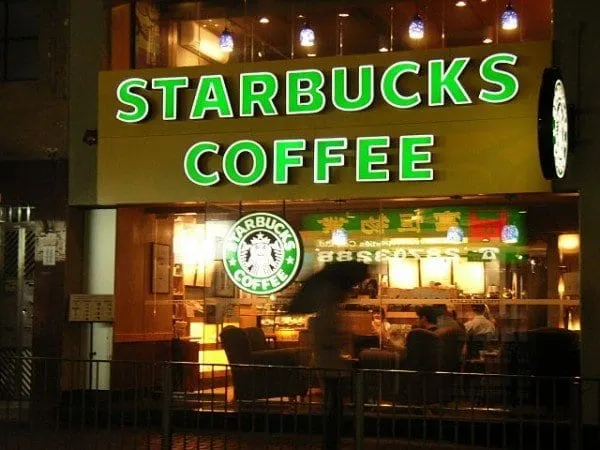
As such, the Seattle-based coffeehouse chain is arguably the most prominent of its kind. Yet, within the context of coffee connoisseurship, or for that matter, mass beverage consumption, Starbucks has received its fair share of criticism.
Coffee enthusiasts, from renowned chef Wolfgang Puck to aspiring baristas, have labeled Starbucks’ beverages as deceivingly mediocre. The caffeine empire has also been criticized for cultural commodification and appropriation, global corporate megalomania, and unethical sourcing methods.
Nevertheless, such incidents have failed to reduce the phenomenal appeal of Starbucks. The emerald mermaid remains beloved by millions and is deservedly credited, by both its fans and detractors, with revolutionizing the modern cafe experience.
Unsurprisingly, Starbucks sustains its popularity through shrewd and unconventional marketing strategies. Here, we take a look at four such strategies.

Amidst all the Instagrammed latte art and cafe gatherings of today, we forget that coffee was hardly a social activity a few decades ago. (Unless we're talking about Europe.) The idea that coffee could be a social affair in the modern age was largely driven by Starbucks. And the company’s social media engagement reflects this.
As early as 2008, Starbucks took to social media and has dominated that realm ever since. Its well-received presence on Facebook, Twitter, Instagram, and Pinterest treats coffee as something to be shared with friends and family. For example, Starbucks regularly announces one-for-one promotions on its social media outlets, which in turn, produces exceptional social media engagement rates via shares, likes, mentions, and comments.
In many ways, Starbucks’ social media strategies are an extension of its stores’ famous calm, inoffensive, and warm ambiance. The general tone of Starbucks’ social media presence has been inclusive, personable, communal, interactive, and non-intrusive. For instance, customer inquiries on Starbucks ’ Facebook page are reliably attended to with patience and transparency, while its Instagram account is adorned with fan photos of Starbucks’ drinks, events, and stores.
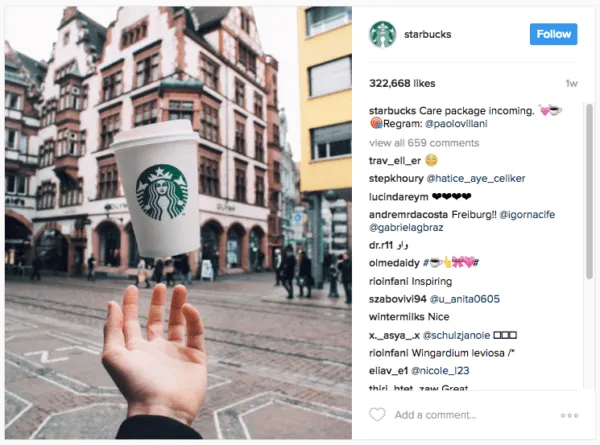
And through Starbucks’ social media outlets, a clear theme emerges. The star of the show isn’t the coffee or the frappuccinos, but rather, the Starbucks’ experience—one of mellow lighting, peaceful lounging, and cultured conversations, all within a safe and unimposing space.
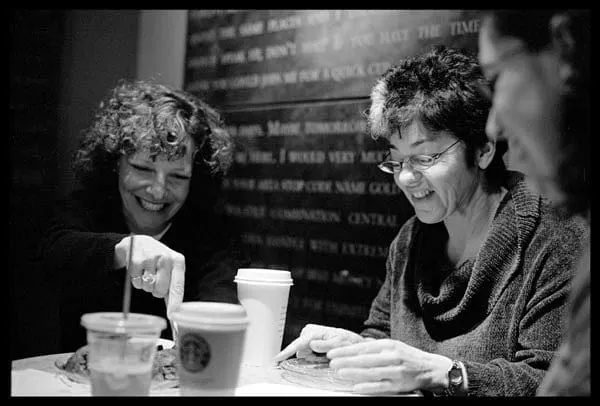
Think of mobile payments and you’d conclude that they were pioneered by some tech firm or financial institution. Instead, it was Starbucks that led and popularized the idea of purchasing products with your mobile phone.
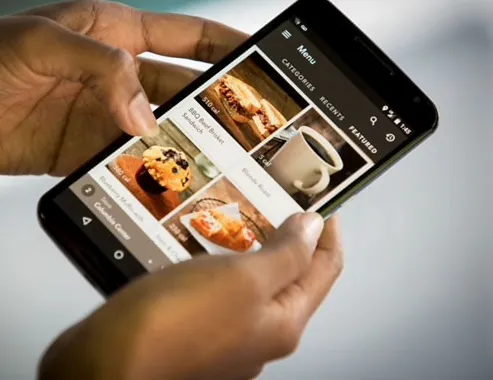
In 2011, Starbucks launched the Starbucks® app, granting its customers the ability to order, pay, and collect their beverages without the torture of queuing or enduring indecisive fellow customers. The app proved an astounding success, to the extent that by 2016, more than a fifth of Starbucks transactions occurred through it. The Wall Street Journal estimated that the Starbucks app held $1.2 billion in 2016, more than some banks:
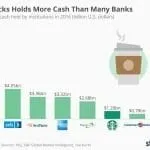
And it’s easy to see why. The Starbucks mobile app is effectively a convenient amalgamation of a loyalty card, a referral program, and a reward system. Customers are rewarded—think free drinks and discounts—for continued patronage. Moreover, the app recommends purchases to customers based on their individual tastes and purchasing patterns.
The irony here is that Starbucks, now praised for its technological innovations, had initially utilized rudimentary QR codes for its mobile app, an unorthodox decision laughed at by technologists of that time.
As mentioned before on the ReferralCandy blog, the Starbucks experience, despite its populist aspirations, projects an exceptional aura of status and prestige. And Starbucks has celebrities to thank for it.
Scan through any celebrity news-site or gossip rag, and you’d find paparazzi shots of famous people clutching Starbucks drinks.
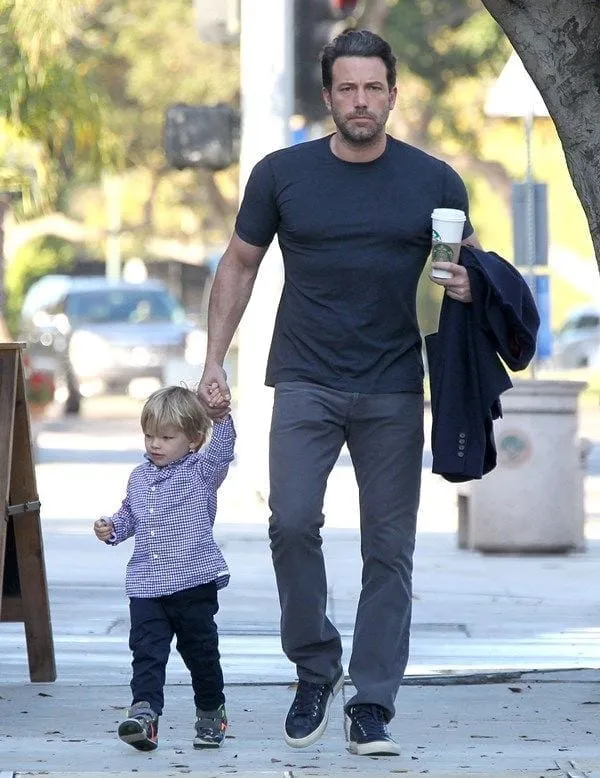
Hollywood’s love affair with Starbucks elevates the coffeehouse to a special sort of status symbol that we, the plebeian masses, can easily obtain and access. In other words, we can be like the celebrities too when we drink Starbucks. And even if your affection for Starbucks refuses to board this bandwagon, you simply cannot escape its allure.
For Starbucks then, this self-fulfilling vortex of publicity and prominence is a godsend to its brand image and advertising budget. Indeed, this probably why the company doesn’t enlist celebrities in its advertising campaigns: because they already do that for free.
It is a well-documented fact that businesses with social causes tend to garner greater brand loyalty and financial gains. A 2013 marketing study revealed that 90% of Americans were likely to trust socially responsible companies and advocate for them.
In terms of social advocacy, Starbucks has certainly made its mark at both local and global levels. For example, Starbucks has a history of supporting LGBT rights, from rebuking its homophobic investors to turning its stores into LGBT safe spaces.
In addition to LGBT issues, Starbucks has championed refugee welfare and rights. In 2015, it launched a humanitarian donation drive for Syrian refugees and migrants. In 2017, the company announced that it would hire 10,000 refugees in all the countries it does business with by the year 2022, much to the chagrin of President Trump’s offended followers. This policy would join another similar Starbucks initiative: the recruitment of 10,000 military veterans by the year 2018.

As expected, Starbucks’ social advocacy has triggered some backlash. At the same time, however, the coffee chain’s hiring campaigns have largely been praised across social media.
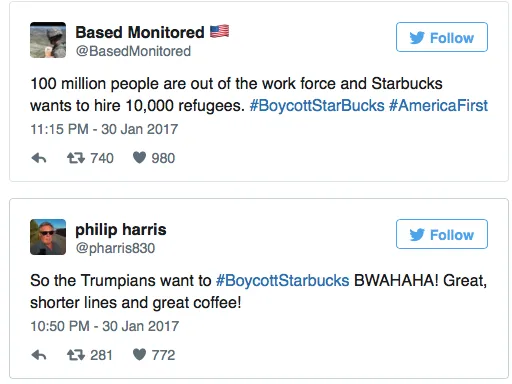
If this Twitter exchange is any indication of Starbucks’ future fortunes, its social activism will certainly reap tremendous rewards not just in customer loyalty, but in acquisition too.
Hydar reads History at Nanyang Technological University. He likes cats and Cersei Lannister.
Grow your sales at a ridiculously
lower CAC.